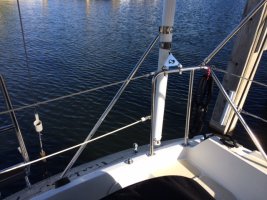Solar/wind is by Solar Stik
Sails are by North Sails
Radar and MFD are by B&G
Sat phone antenna is by PDQ
Radar tower by Garhauer
Self steer windvane by Monitor
We sail tested today and found the solent stay / working jib and storm jib systems work amazingly well! Pacific Offshore Rigging designed an ingenious system for the solent stay that enables us to easily rig it and then tension it from the cockpit with almost no metal parts. The North Sails are incredibly well built and I was surprised at the improvement in performance.
As always if anyone is thinking about going down these roads I'm happy to answer any questions or share info. I'll try to post more pics soon, these are just a few quick ones out of dozens that were taken.
Six weeks and counting...
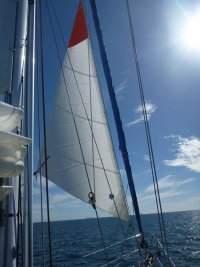
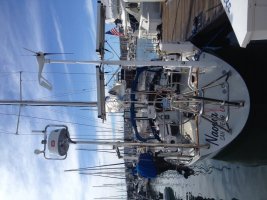
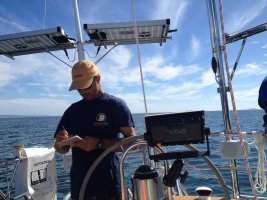
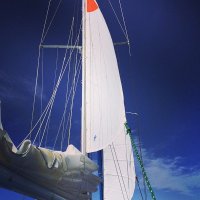
Sails are by North Sails
Radar and MFD are by B&G
Sat phone antenna is by PDQ
Radar tower by Garhauer
Self steer windvane by Monitor
We sail tested today and found the solent stay / working jib and storm jib systems work amazingly well! Pacific Offshore Rigging designed an ingenious system for the solent stay that enables us to easily rig it and then tension it from the cockpit with almost no metal parts. The North Sails are incredibly well built and I was surprised at the improvement in performance.
As always if anyone is thinking about going down these roads I'm happy to answer any questions or share info. I'll try to post more pics soon, these are just a few quick ones out of dozens that were taken.
Six weeks and counting...






